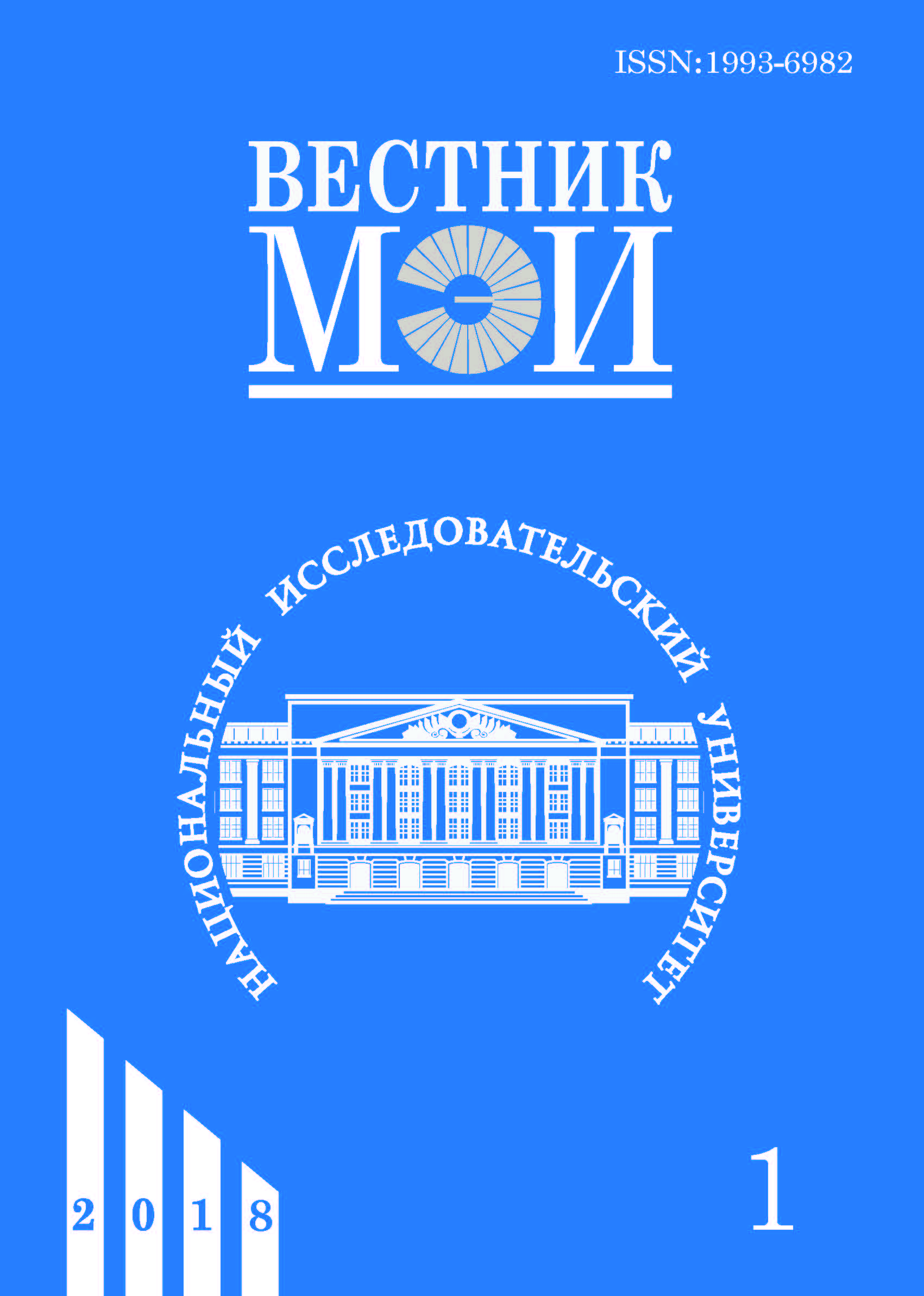Модифицированное уравнение связанных мод параллельных диэлектрических волноводов
Аннотация
В настоящее время большинство ученых используют обыкновенную (ортогональную) формулировку теории связанных мод, несмотря, на активное использование ее на практике. Показаны ее неточность и ошибочность в случае сильно связанных мод. При моделировании устройств (в случае уменьшения их габаритов), использующих эффекты распределенной связи диэлектрических волноводов, или анализе паразитных перекачек энергии в системах с плотно упакованными диэлектрическими волноводами неизбежно столкновение с сильным отклонением теоретических предсказаний. В качестве альтернативы предложена модифицированная (или неортогональная) формулировка, дающая большую точность. Для вывода уравнения связанных мод в неортогональной формулировке ранее был использован предварительный вывод теории возбуждения волноводов произвольными источниками и на основании этих результатов выведено искомое уравнение. Несмотря на то, что подобный подход позволяет давать полученным результатам наиболее общие физические интерпретации, он кажется избыточным для вывода уравнения связи параллельных диэлектрических волноводов, а также труден для анализа и проверки. В нем необходимо предварительно определить эквивалентные токи, вызванные влиянием полей для каждого отдельного волновода связанными с ним модами соседних. Приведен способ вывода уравнения связанных мод в неортогональной формулировке, фактически использующий только уравнения Максвелла, а также анзац в виде суммы мод отдельных волноводов и изначально неизвестных дополнительных полей, связанных со взаимным влиянием близко расположенных волноводов. Получены выражения для этих полей через поля мод волноводов и дополнительные коэффициенты объемной и поверхностной связи. В данном случае был проигнорирован непрерывный спектр мод, а взят только дискретный, как для простоты вывода, так и благодаря доступности для экспериментального анализа.
Литература
2. Truong C. D. e. a. A Broadband Second-order Mode Synthesizer Based on an 3×1 Multimode Interference Coupler and Phase Shifters Using Silicon Waveguides // IEEE 6 Intern. Conf. Communications and Electronics. 2016. Pp. 397—402.
3. Ahmed R. e. a. Multimode Waveguide Based Directional Coupler // Optics Communications. 2016. V. 370. Pp. 183—191.
4. Shalaby H.M.H. Bi-directional Coupler as a Mode- division Multiplexer/Demultiplexer // J. Lightwave Techn. 2016. V. 34. No. 15. Pp. 3633—3640.
5. Dai D., Wang J., Shi Y. Silicon Mode (De) Multiplexer Enabling High Capacity Photonic Networks- on-chip with a Single-Wavelength-Carrier Light // Optics Lett. 2013. V. 38. No. 9. Pp. 1422—1424.
6. Luo Y. e. a. Integrated Dual-mode 3 dB Power Coupler Based on Tapered Directional Coupler // Sci. Rep. 2016. V. 6. Pp. 23516.
7. Zhao W.K. e. a. Horizontal Directional Coupler Formed with Waveguides of Different Heights for Mode- division Multiplexing // IEEE Photonics J. 2017. V. 9. No. 5. Pp. 1—9.
8. Zhang K., Li D. Electromagnetic Theory for Microwaves and Optoelectronics.Springer Sci. & Business Media, 2013.
9. Little B.E., Huang W.P. Coupled-mode Theory for Optical Waveguides // Progress in Electromagnetics Research. 1995. V. 10. Pp. 217—270.
10. Pease M.C. Generalized Coupled Mode Theory // J. Appl. Phys. 1961. V. 32. No. 9. Pp. 1736—1743.
11. Yariv A. Coupled-mode Theory for Guided-wave Optics // IEEE J. of Quantum Electronics. 1973. V. 9. No. 9. Pp. 919—933.
12. Hardy A., Streifer W. Coupled Mode Theory of Parallel Waveguides // J. Lightwave Technology. 1985. V. 3. No. 5. Pp. 1135—1146.
13. Ohke T., Tomabechi Y., Matsumura K. Coupled Mode Theory of Parallel Multi- and Single-mode Dielectric Waveguide // Electronics and Communications in Japan (Pt. II. Electronics). 1989. V. 72. No. 2. Pp. 91—100.
14. Барыбин А. Электродинамика волноведущих структур. Теория возбуждения и связи волн. М: Физ-матлит, 2007.
---
Для цитирования: Андреев А.С., Крутских В.В. Модифицированное уравнение связанных мод параллельных диэлектрических волноводов // Вестник МЭИ. 2018. № 1. С. 112—118. DOI: 10.24160/1993-6982-2018-1-112-118.
#
1. Miller S. Teoriya svyazannykh Voln i ee Primenenie k Volnovodam. Volnovodnye Linii Peredach s Malymi Poteryami. M.: Izd-vo Inostr. Lit-ry, 1960. (in Russian).
2. Truong C. D. e. a. A Broadband Second-order Mode Synthesizer Based on an 3×1 Multimode Interference Coupler and Phase Shifters Using Silicon Waveguides. IEEE 6 Intern. Conf. Communications and Electronics. 2016:397—402.
3. Ahmed R. e. a. Multimode Waveguide Based Directional Coupler. Optics Communications. 2016;370: 183—191.
4. Shalaby H.M.H. Bi-directional Coupler as a Mode- division Multiplexer/Demultiplexer. J. Lightwave Techn. 2016;34;15:3633—3640.
5. Dai D., Wang J., Shi Y. Silicon Mode (De) Multiplexer Enabling High Capacity Photonic Networks- on-chip With A Single-Wavelength-Carrier Light. Optics Letters. 2013;38; 9:1422—1424.
6. Luo Y. e. a. Integrated Dual-mode 3 dB Power Coupler Based on Tapered Directional Coupler. Sci. Rep. 2016;6:23516.
7. Zhao W.K. e. a. Horizontal Directional Coupler Formed with Waveguides of Different Heights for Mode- division Multiplexing. IEEE Photonics J. 2017;9;5:1—9.
8. Zhang K., Li D. Electromagnetic Theory for Microwaves and Optoelectronics.Springer Sci. & Business Media, 2013.
9. Little B.E., Huang W.P. Coupled-mode Theory for Optical Waveguides. Progress in Electromagnetics Research. 1995;10:217—270.
10. Pease M.C. Generalized Coupled Mode Theory. J. Appl. Phys. 1961;32;9:1736—1743.
11. Yariv A. Coupled-mode Theory for Guided-wave Optics. IEEE J. of Quantum Electronics. 1973;9; 9:919—933.
12. Hardy A., Streifer W. Coupled Mode Theory of Parallel Waveguides. J. Lightwave Technology. 1985;3;5:1135—1146.
13. Ohke T., Tomabechi Y., Matsumura K. Coupled Mode Theory of Parallel Multi- and Single-mode Dielectric Waveguide. Electronics and Communications in Japan (Pt. II. Electronics). 1989;72;2:91—100.
14. Barybin A. Elektrodinamika Volnovedushchikh Struktur. Teoriya Vozbuzhdeniya i Svyazi Voln. M: Fizmatlit, 2007. (in Russian).
---
For citation: Andreev A.S., Krutskikh V.V. A Modifi ed Coupled Mode Equation For Parallel Dielectric Waveguides. MPEI Vestnik. 2018;1:112—118. (in Russian). DOI: 10.24160/1993-6982-2018-1-112-118.




